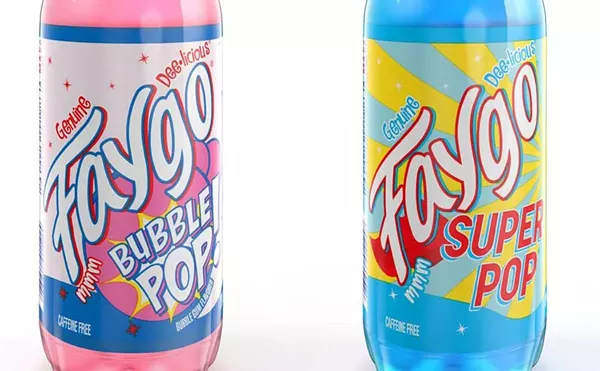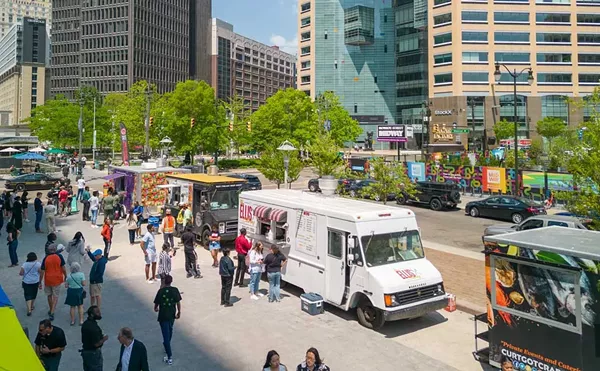At first look, one of the most intriguing things on the menu looks like it’s a $60 choice. But look again. The multi-course “Bento Box for Two” is an unbelievable bargain. The $30 tab is for both diners.
Bento boxes, beautifully lacquered and sectioned containers, had their origins in Japan as lunch boxes. I’ve always looked forward to eating out of a bento box, but here it’s more of a bento tray, fire-orange and black with cutouts to hold the food. No matter, who can complain when eating a Japanese meal, from soup to ice cream, for $15?
This 10-year-old restaurant is always busy; the servers are always hustling. Three sushi chefs are working intently. There are no tablecloths, your water glass may not be refilled for a few moments, and used plates may linger longer than is desirable, but who’s complaining?
Our bento dinner begins with a simple bowl of miso soup with a few greens, some tiny cubes of tofu and rings of scallions. Next, a house salad of ho-hum iceberg lettuce but with the most delicious dressing made of carrots and ginger. Then a big bowl of edamame — soy beans, picked while still sweet and steamed in their pods. Along with a California roll, you have a choice of sushi (vinegared rice prepared as rolls or ovals with fish — often raw — and vegetables) or sashimi (raw fish, no rice). Then the tray: a vivid green seaweed salad flavored with sesame oil, which has an intoxicating aroma and a smoky taste. Another cold dish — thinly sliced squid, snowy white on the inside, brick red on the outside. Another compartment is filled with shumai, shrimp-stuffed steamed dumplings, which are dipped in ponzu sauce before eating. In the remaining compartments: salmon teriyaki, beef teriyaki and both shrimp and vegetable tempura. For dessert, choose from such ice cream flavors as green tea, ginger, mango or red bean paste. Dusky flavors, pale colors and restrained use of sugar make Japanese ice cream way more interesting than Ben & Jerry’s.
The menu is long and complex at Mene Sushi. Owner Joe Yoon is Korean and there are several Korean specialties, such as bimbimbap (served in a hot bowl made of rock) and bulgoki (thin slices of marinated meat served on a hot plate), but no tabletop cooking here. The Japanese portion of the menu includes standards such as sushi and tempura, as well as donburi and negimaki.
Donburi is fish, meat, vegetables and other ingredients simmered together and served over rice in a porcelain bowl, and set at the last minute with an egg.
Negimaki has its origins in New York City in the 1960s, where it was invented as a way to lure Americans to Japanese restaurants by inventing dishes with more meat than is traditional in Japanese cuisine. Prepared very much like sushi, a thin cut of meat is rolled around scallions. It’s then sliced and grilled with teriyaki sauce. This is one of the menu items with an asterisk that leads to the now-standard restaurant caveat about raw or undercooked meat. Unfortunately, my order of beef negimaki was way overcooked. Be sure to specify your desired degree of doneness.
For a subtle appetizer, try age (AH-gee) dashi tofu. Squares of silky tofu are dusted with cornstarch and pan-fried until lightly browned. Some say tofu has no taste. It does, but it’s subtle. This dish is served in a light sauce traditionally made of dashi — a broth made from seaweed, dried bonito flakes and soy sauce.
Big bowls of udon (thick wheat noodles) and soba (thin buckwheat noodles) are meals in themselves, and available in vegetarian versions with bok choy, zucchini, carrots and onions; or with tempura, chicken or seafood.
Beer, wine and sake are available.
Mene Sushi, which translates as “King of Sushi,” is a chance to enjoy Japanese food at reasonable prices. This statement is on the restaurant’s Web site (menesushi.com): “Believe or not Mene Sushi is keeping the same price for 10 years.”
Believe it.
Elissa Karg dines for Metro Times. E-mail [email protected].






